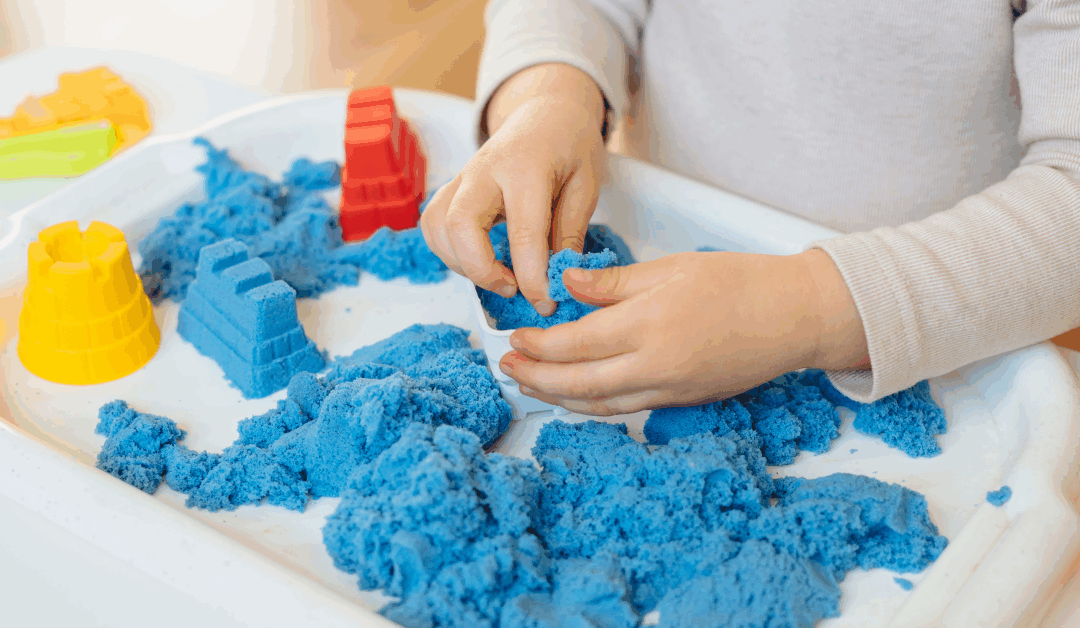You’ve probably seen them in stores or maybe your child has a collection of them already—textured balls, stretchy bands, spinning gadgets, chewable necklaces, squishy animals, pop-it boards in every shape imaginable. They’re colorful, engaging, and often irresistible to little hands.
But sensory toys are more than just fun distractions.
They’re powerful tools for learning, calming, connecting, and exploring the world—especially for kids with sensory processing needs, autism, ADHD, or anxiety.
Whether you’re a parent, educator, therapist, or someone who just loves understanding how brains and bodies work together, let’s explore the magic of sensory toys, why they’re important, and how they support healthy development.
What Are Sensory Toys?
Let’s start with the basics. Sensory toys are specially designed tools that engage one or more of the senses—touch, sound, sight, movement, smell, and sometimes even taste. They’re made to offer sensory input in ways that are calming, stimulating, or organizing, depending on what the child (or adult!) needs.
Some sensory toys are squishy and stretchy. Others light up, vibrate, make noise, or offer resistance. Many offer a mix of textures, movements, or patterns to help the brain process sensory information in a regulated, soothing way.
You might see:
- Stress balls or squishy animals
- Chewelry (chewable jewelry)
- Fidget spinners or cubes
- Sensory bins with rice, sand, or water beads
- Tactile boards with rough, smooth, bumpy surfaces
- Light-up or sound-activated toys
- Weighted stuffed animals
- Stretchy resistance bands or body socks
Each toy serves a purpose—supporting nervous system regulation, building focus, improving fine motor skills, or simply bringing a sense of comfort through sensory play.
What Are Sensory Toys Used For?
So what exactly do sensory toys do?
Short answer: a lot. Long answer: they support the development of sensory integration, which is the brain’s ability to take in, process, and respond appropriately to sensory information.
Children (and adults) with sensory processing differences might overreact to sounds, textures, or movement—or they might underreact, constantly seeking stimulation. Sensory toys help bridge that gap by meeting sensory needs in safe, manageable, and enjoyable ways.
Here’s how sensory toys are commonly used:
1. Calming Overstimulation
When a child feels overwhelmed, certain sensory toys (like weighted animals or textured squish toys) can bring comfort and help their nervous system relax.
2. Providing Stimulation
Some kids need more input to stay focused or engaged. Vibrating toys, chewables, or spinning gadgets can give their brains the boost they need.
3. Improving Motor Skills
Toys that involve squeezing, twisting, or threading support hand strength, dexterity, and fine motor coordination.
4. Building Focus and Attention
A well-chosen sensory toy can help a child stay grounded and attentive in the classroom, at the dinner table, or during transitions.
5. Supporting Emotional Regulation
When big feelings hit, sensory toys offer a safe outlet. Fidgeting, squishing, or chewing can be a form of healthy self-soothing.
Sensory play isn’t just about fun—it’s a therapeutic tool that supports a child’s development in ways they can feel, but maybe can’t yet explain.
How Are Sensory Toys for Autism Used?
For children on the autism spectrum, sensory toys can be life-changing. Sensory processing differences are incredibly common in autism—some kids are hypersensitive (too much input feels overwhelming), while others are hyposensitive (they need more input to feel grounded).
That’s where sensory toys for autism come in. These toys can be tailored to meet individual needs, helping children regulate their bodies and feel safe in their environments.
Here are a few ways sensory toys are used to support kids with autism:
1. Reducing Anxiety and Meltdowns
Calming tools like chewables, weighted blankets, or soft tactile toys help kids soothe themselves before big emotions boil over.
2. Creating Predictable Routines
Having a favorite fidget or tactile toy during transitions (like car rides or waiting rooms) provides familiarity and comfort, helping reduce unpredictability.
3. Building Social Skills Through Play
Sensory toys can be a bridge to peer interaction. Shared sensory play like water beads or building textured towers together can promote connection in a low-pressure way.
4. Encouraging Communication
For nonverbal or minimally verbal children, sensory toys can be used as tools in speech therapy to encourage engagement, imitation, and turn-taking.
5. Supporting Self-Advocacy
As kids grow, they can begin to recognize what their bodies need and choose the right sensory toy to meet that need—whether it’s calming down, waking up, or staying focused.
The beauty of sensory toys for autism is that they can be customized. There’s no one-size-fits-all. It’s all about tuning in to what works best for that child, in that moment.
Why Are Sensory Toys Important?
It’s not an exaggeration to say that sensory toys can be essential tools in a child’s daily life—especially for kids with neurodivergent needs. But their importance goes beyond individual diagnoses.
Here’s why sensory toys matter:
1. They Support Regulation, Not Just Distraction
Sensory toys aren’t meant to “occupy” a child—they’re meant to support them. When kids have access to the sensory input they need, they feel safer, more in control, and more able to function.
2. They Build Self-Awareness
With consistent use, kids start to learn what helps them feel better. That’s huge. Learning to notice your needs and meet them? That’s emotional intelligence in action.
3. They Help Kids Thrive in Real-World Environments
Classrooms, restaurants, stores—these places can be tough for sensory-sensitive kids. Having a sensory toy in-hand can be the difference between a meltdown and a manageable moment.
4. They Support Inclusion
Sensory-friendly classrooms, therapy rooms, and homes make space for every kind of learner. Sensory toys are a big part of creating environments where all kids can feel welcome.
5. They Empower, Not Shame
Using a sensory toy says: “I’m listening to my body, and I know what helps me.” That’s powerful. And when adults support this, we’re giving kids permission to honor themselves.
Final Thoughts: Sensory Needs Are Human Needs
Whether it’s a child calming down with a stress ball before class, a teen chewing on a discreet necklace during math, or an adult using putty while they work—sensory toys meet real needs in real time.
They’re not babyish. They’re not crutches. They’re tools for regulation, learning, connection, and care.
If you’ve ever wondered whether sensory toys are “necessary,” let this be your reminder: meeting someone’s sensory needs isn’t extra—it’s essential.
So go ahead—build the sensory bin, try the tools, get curious.
Because when we support kids’ sensory needs, we’re not just helping them cope. We’re helping them shine.
Want A Helping Hand?
Hope Human Services provides disability services in Washington State. Our team doesn’t just provide support, we create exceptional life experiences.

